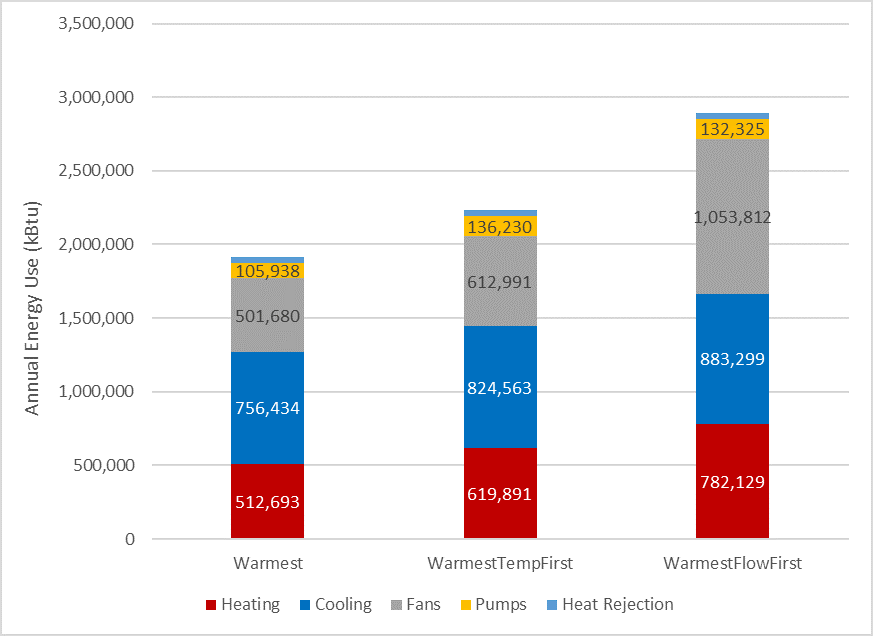Warmest vs WarmestTemperatureFlow SetpointManager
I'm trying to understand the vast differences I get in energy usage between different SetpointManager options. This originated from a CBECC-Com model. From what I can tell from the I/O and Engineering References:
SetpointManager:Warmestresets the cooling SAT based on the cooling demand of the warmest zone, at the maximum zone supply air flow rate.
SetpointManager:WarmestTemperatureFlow "Temp First" resets the cooling SAT based on the cooling demand of the warmest zone, at the zone minimum supply air flow rate. If this SAT is less than the minimum, the SAT is set to the minimum, and the flow rate is increased until the cooling loads are met.
SetpointManager:WarmestTemperatureFlow "Flow First" resets the supply air flow rate based on the cooling demand of the warmest zone, at the zone maximum supply air temperature. If the flow is greater than the maximum, the flow is set to the maximum and the SAT is reduced until the cooling loads are met.
I tested all three in a project (from CBECC-Com) with a built-up VAV reheat system (water-cooled chiller, and boiler) and came up with this plot of HVAC energy usage. Everything in the models is hard-sized. I also plotted hourly results from the same node as the setpoint manager, but wasn't able to make sense of the results.

Questions:
Why do these options yield such different results?
In what scenarios would it make sense to implement the
SetpointManager:WarmestTemperatureFlowFlow First or Temperature First options vs theSetpointManager:Warmest? I want to generally understand what the pros and cons are for each option for different system configurations.







I added more details, mentioning that this is from a CBECC-Com model, so all inputs are hard-sized. There is no auto-sizing happening. It is also a built-up VAV system with a water-cooled chiller and boiler.
Anna Osborne Brannon I ran a similar comparison starting with the 5ZoneAirCooled example file and got a very different pattern of results. If you can share the idf files that generated the above results, please post a link here or submit them to the EnergyPlus helpdesk.